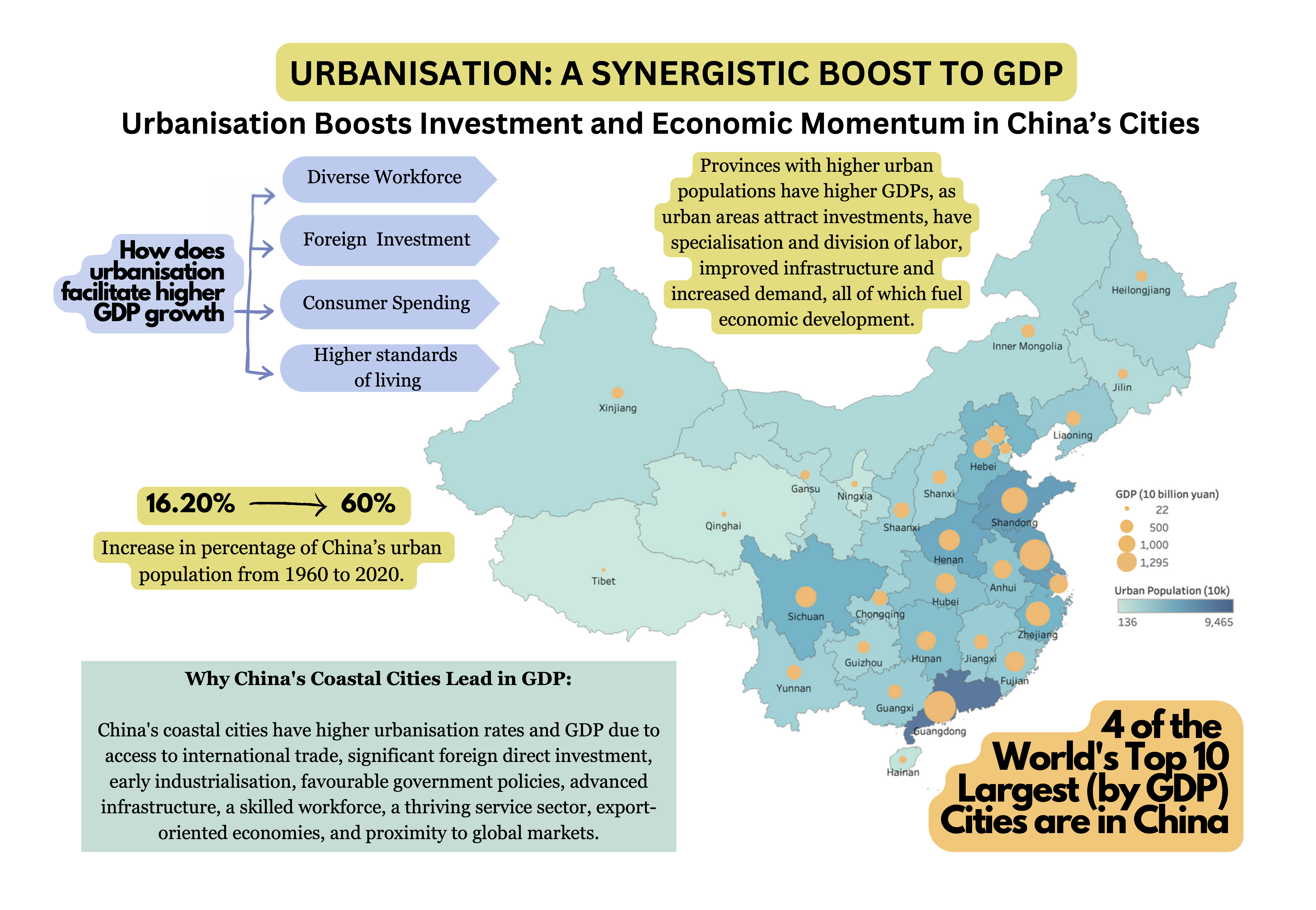China's urbanisation has rapidly increased over the last few decades, transforming its economy and society. The urban population surged from 16.20 % of the total population in 1960 to over 60% in 2020, driven by massive rural-to-urban migration and government policies promoting the growth of urban centers. This shift has fueled economic development, and increased living standards for millions. The ongoing urbanization process continues to reshape the nation's demographic and economic landscape, positioning cities as the main engines of China's growth. This is reflected by the fact that provinces that have a higher percentage of urban population tend to have a higher GDP. For instance, Tibet has the lowest urban population of 1.36 million and a GDP of 0.215 trillion yuan. On the other hand, Guangdong has the highest urban population of 94.6 million and a GDP of 13 trillion yuan. Moreover, 4 of the World’s ten largest cities, in terms of GDP, are in China. It can be assumed that there is a positive relationship between urban population and GDP in China.



Prepared by
Kriti Rai
Kriti is an undergraduate student at FLAME University pursuing Data Science and Economics. She is proficient in C++, Python, MySQL, and data visualisation tools such as Tableau. Her areas of interest lie in building predictive models and utilising machine learning to enhance decision-making and tackle real-world challenges.